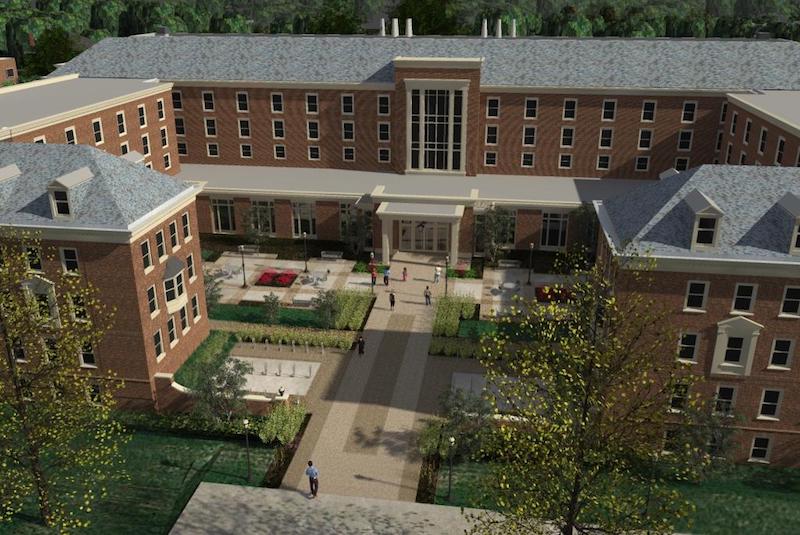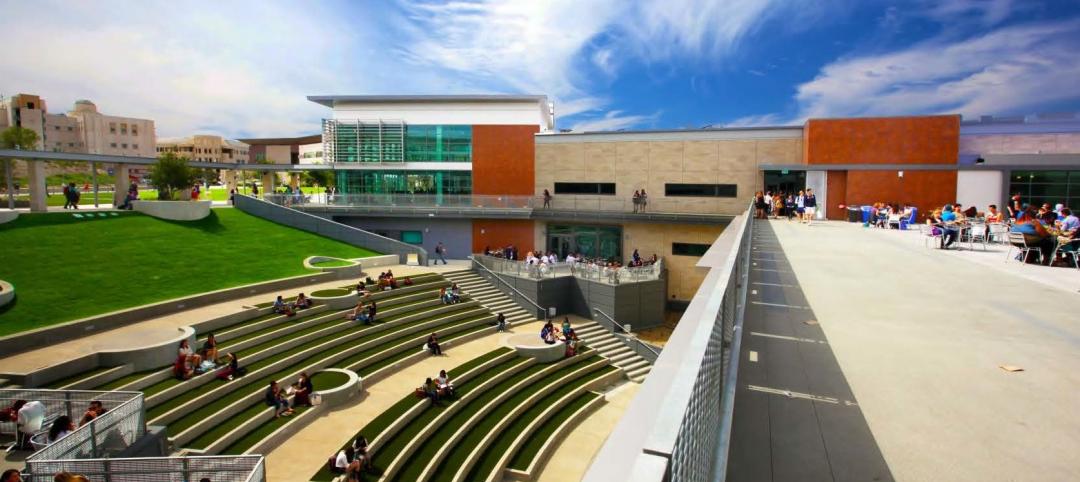Originally built in stages between 1928 and 1932, the University of Minnesota’s Pioneer Hall became an outdated facility that did not meet building codes, wasn’t handicap accessible, and was lacking in many comforts students wanted.
The facility had narrow corridors, no air conditioning, limited study space, and an underground dining area. After debating for years whether to renovate the building or completely knock it down and build a new one, the university decided on a $104.5 million renovation/addition project spearheaded by KWK Architects partnered with architecture/engineering firm-of-record TKDA.
The project retains the character-defining features of the original building while expanding the building footprint to improve housing and dining programs. The new housing component increases the number of beds to 756 and incorporate study and community spaces to enhance the experience of first-year students.
See Also: AIA and the University of Minnesota partner to develop Guides for Equitable Practice
The new dining space will be moved from its underground location and brought up to grade level. Seating capacity, meal, serving, and seating options will all be expanded. The new facility will be able to accommodate 850 students at any time.
The renovation also rectifies one of the biggest shortcomings of the original building by providing for full ADA accessibility. New meditation rooms and lounges will also be created.
Once completed, Pioneer Hall will comprise 257,000 sf, which includes 85,600 sf of renovated space and 171,400 sf of new construction. The renovated Pioneer Hall is slated to be open in time for fall semester 2019.
Related Stories
| May 10, 2014
How your firm can gain an edge on university projects
Top administrators from five major universities describe how they are optimizing value on capital expenditures, financing, and design trends—and how their AEC partners can better serve them and other academic clients.
| May 1, 2014
First look: Cal State San Marcos's posh student union complex
The new 89,000-sf University Student Union at CSUSM features a massive, open-air amphitheater, student activity center with a game lounge, rooftop garden and patio, and ballroom space.
| Apr 29, 2014
USGBC launches real-time green building data dashboard
The online data visualization resource highlights green building data for each state and Washington, D.C.
Smart Buildings | Apr 28, 2014
Cities Alive: Arup report examines latest trends in urban green spaces
From vertical farming to glowing trees (yes, glowing trees), Arup engineers imagine the future of green infrastructure in cities across the world.
| Apr 16, 2014
Upgrading windows: repair, refurbish, or retrofit [AIA course]
Building Teams must focus on a number of key decisions in order to arrive at the optimal solution: repair the windows in place, remove and refurbish them, or opt for full replacement.
| Apr 9, 2014
Steel decks: 11 tips for their proper use | BD+C
Building Teams have been using steel decks with proven success for 75 years. Building Design+Construction consulted with technical experts from the Steel Deck Institute and the deck manufacturing industry for their advice on how best to use steel decking.
| Apr 8, 2014
Science, engineering find common ground on the Northeastern University campus [slideshow]
The new Interdisciplinary Science and Engineering Building is designed to maximize potential of serendipitous meetings between researchers.
| Apr 2, 2014
8 tips for avoiding thermal bridges in window applications
Aligning thermal breaks and applying air barriers are among the top design and installation tricks recommended by building enclosure experts.
| Mar 26, 2014
Callison launches sustainable design tool with 84 proven strategies
Hybrid ventilation, nighttime cooling, and fuel cell technology are among the dozens of sustainable design techniques profiled by Callison on its new website, Matrix.Callison.com.
| Mar 20, 2014
Common EIFS failures, and how to prevent them
Poor workmanship, impact damage, building movement, and incompatible or unsound substrate are among the major culprits of EIFS problems.

















